RC Cars: First Purchases - Chassis and Powertrain
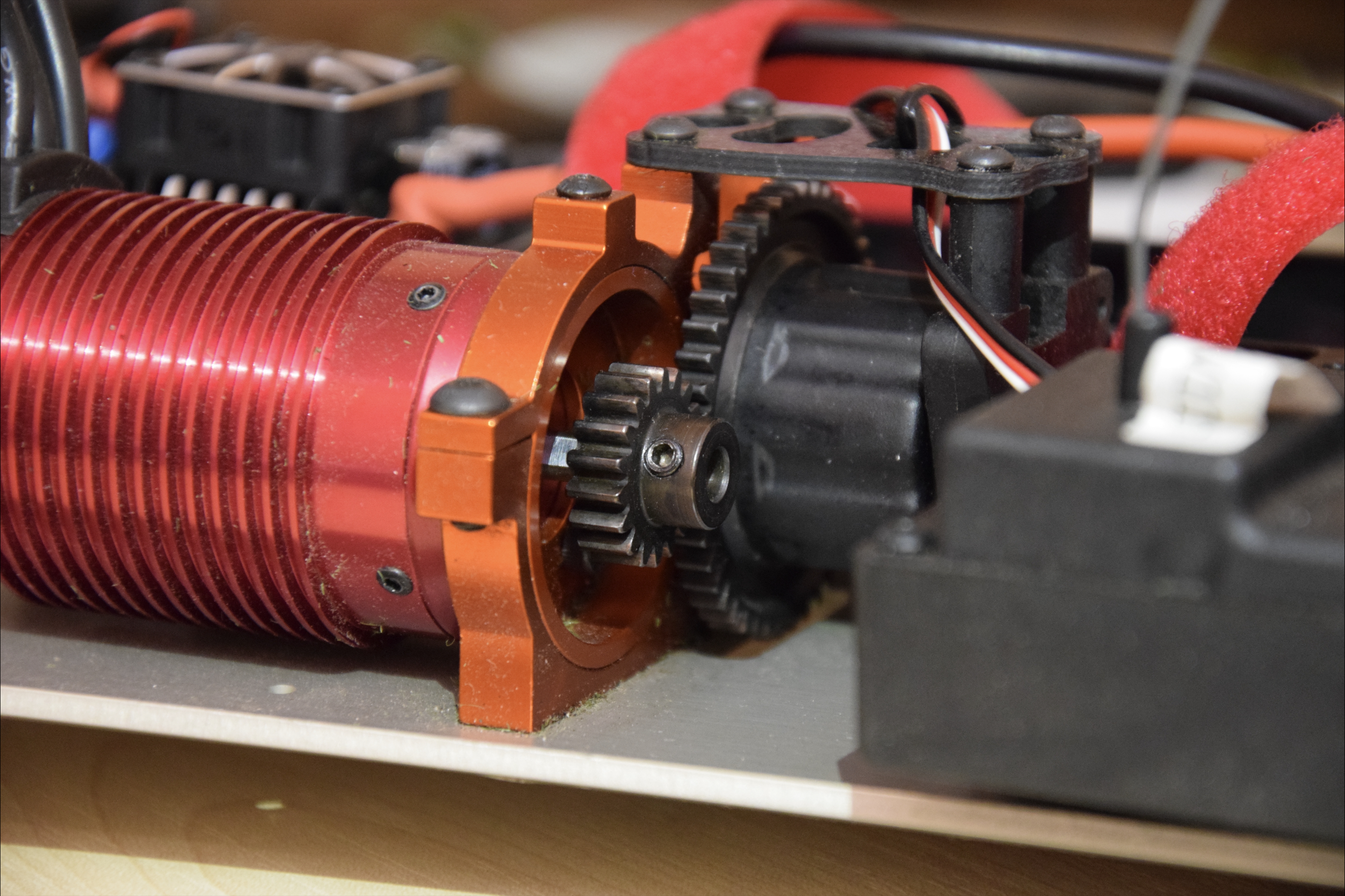
Powerplant - it sounds somehow strange, but if you think about it, it very clearly describes the very components that make the model move. Not sure if servo is included here (left / right). If you read the first part of this cycle, then you know that there are models on the internal combustion engine and on electric motors. Since for the most part I describe my experience - we will talk about electric motors and components for them.
To write a manual on electric motors and regulators is boring and boring business. I will add useful links at the end, for the more curious. In this article we will consider the MAXIMUM that you need to know how for a person who wants to have fun + not fall face down in the mud, in holivars in the area. I will try to write about what is really important and what guided myself.
As a typical programmer, I went the difficult way, trying to understand how it all works and try to find the best. But in fact, you can’t just take it into account and plan everything in advance.

You probably watched missile launches that were canceled at the last moment. The cost of error is high, and testing takes time and preparation. I don’t know why this pins me, but something like that. With real hobbies, if you bought something, something was wrong or broke something, you won’t be able to just download another program or library after solving the problem. You have to wait days or even weeks for delivery with new parts.
To find out what needs to be tightened up or darkened is possible only when you get out onto the track, it is good if once a week. For this, read less, listen to experts and try more. The mathematics are not simple here and such questions as - but will my motor overheat in a couple of laps? just tired of answering. Easier to drive and measure :)
Build RC Cars

Before you go to the store, it is logical to understand what these machines are made of. I did not have any particular difficulties with this. There are not many components.
- Chassis
- Electric motor
- ESC (controls the electric motor)
- Servo
- Battery
- Equipment for control
With cars as with computers, the choice is huge. There are different classes that we examined in the first article, there are ready-made, half ready and there are just accessories. If you are interested in ready-made ones, then I don’t understand what are you doing here? :)

Ready are marked RTR - Ready to run, that is, ready for pokatushki. Such kits even come with equipment out of the box. Clear business is more suitable for those who do not want to understand for the first time or for a gift.
ARR - Almost Ready to Run, that is, almost ready for pokatushkami. Typically, this is a chassis with a motor, an ESC controller and a servo drive. You need to buy equipment, a battery, a charger.
And there is also a Kit version. It is just a chassis. Corps so to speak. It can be assembled, or maybe disassembled. I would probably recommend taking the collected ones, if you are a beginner, you will have time to sort through it. Although if you are a car owner, I think you already have the necessary skills :)
Chassis
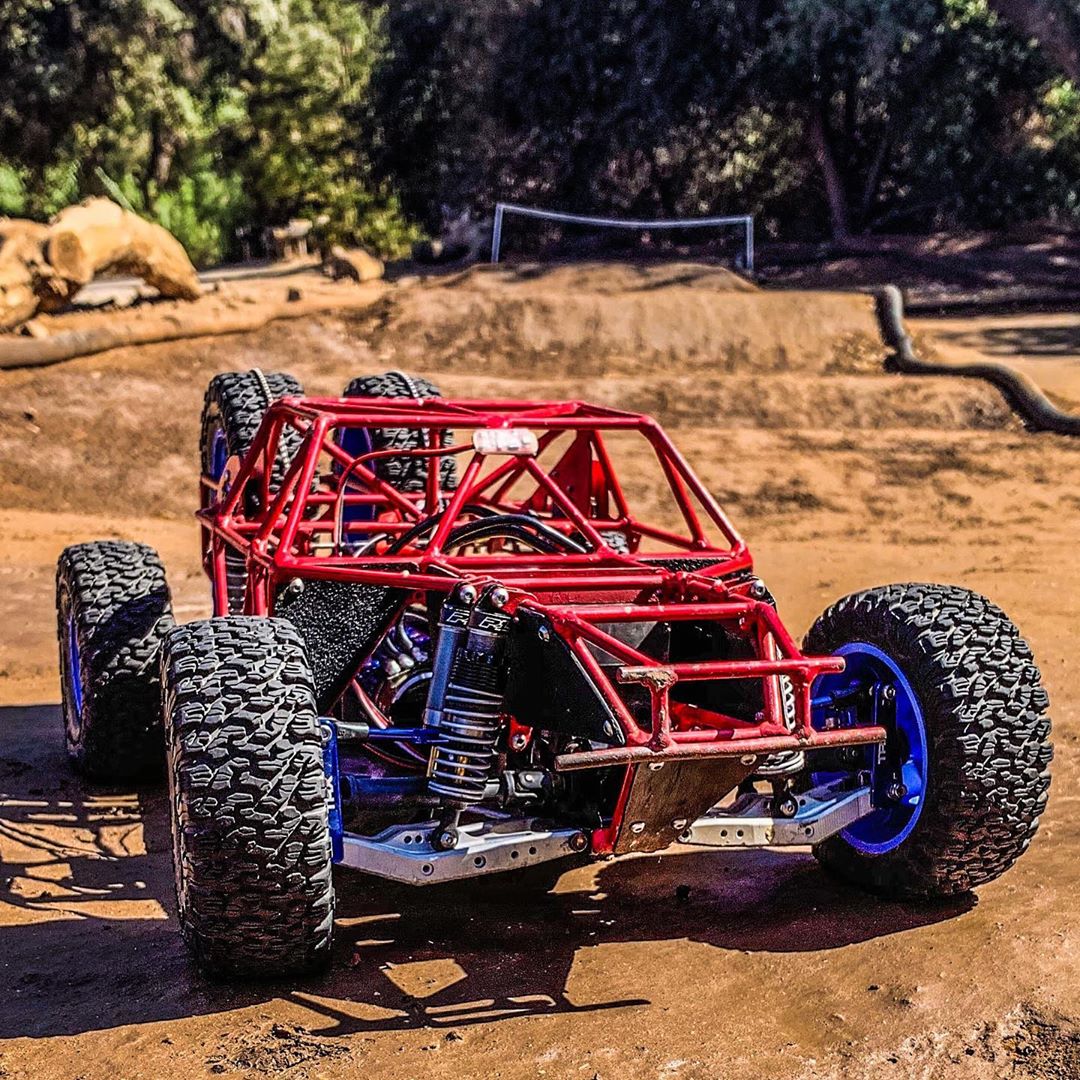
Under the chassis means what it is attached to, suspension, wheels etc. Sold both assembled and disassembled. I am sure you can collect everything in detail. Enough is not a simple thing as it might seem at first glance. Shock absorbers, transmission all sorts of differentials, fists and a lot of everything that I do not even know what is called.
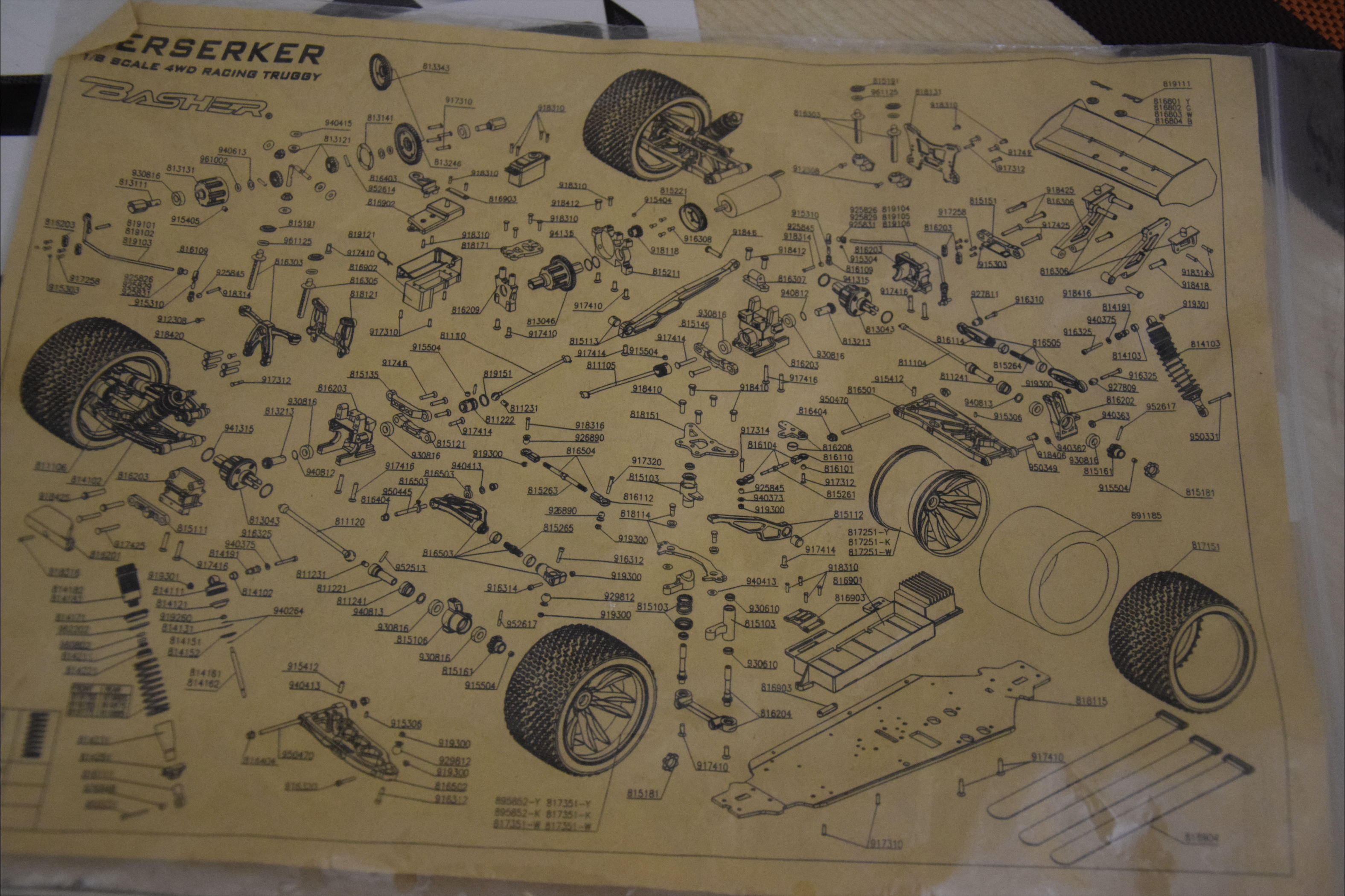
The choice of chassis is largely determined by the class of the model you want, the scale and credit of strength.

(under ICE, may differ slightly mounts, body)
I am such a person that he loves first of all with his eyes, and therefore, having seen his chassis, I was crazy of how cool and cool everything looks. Without thinking twice, I decided that I would take it. I have a BSR Berserker 1/8 Truggy Kit.

Instagrams have different accounts on the topic of RC, if you are a lover of aesthetics, then there you can see a lot of beauty on this topic. For example, the hash tag is #rccars .
When choosing it is worth paying attention to the materials. The cheaper they are, the more often you will have to purchase consumables. I’m not an extreme racer and haven’t bought anything from the chassis parts yet, but judging by the presence of consumables on sale and video on the Internet how cars break down, it's worth thinking about.
The more plastic in the chassis, the cheaper and more fragile it is. But this does not mean that it should all be made of carbon or aluminum, although this happens :)
As a rule, materials are mixed, due to the adequate weight and the fact that the metal is not always better. For example, the base and butterflies (to which the suspension arms and shock absorbers are attached) are aluminum, the suspension arms are made of "strong plastic", and other small non-critical fasteners are plastic "simpler".
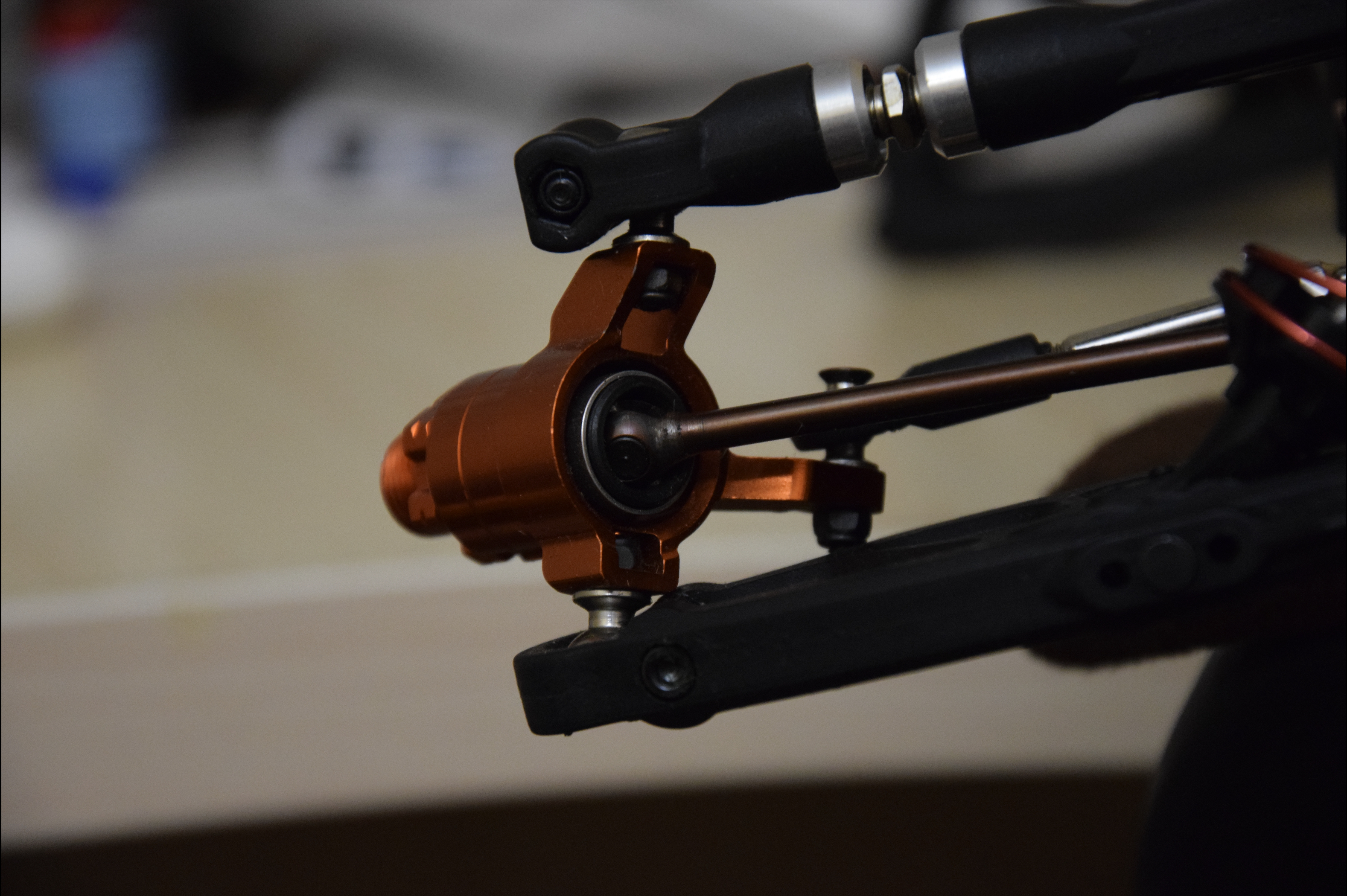
(The wheels on my chassis are attached here)

The rear butterfly is metallic, shock absorbers, suspension arms, a spoiler are attached to it. Below in the differential plastic. The clearance of the model is regulated by installing shock absorbers on various openings on the butterfly, suspension arms, as well as replacing the shock absorbers themselves.
The photo also shows the anti-roll bar. Initially, the chassis was without it, but it was bundled. After the first day of pokatushek, I realized that the machine often turns over on bends and still decided to stabilize. Joy like a real mechanic :) Looks like Lego in childhood I did not have enough.
The chassis, like real cars, has a different transmission. Four-wheel / partial drive. For example, my model has a full drive and already 3 differentials. Front, rear and center, which is closest to the motor, to align the rear and front wheels. Differentials are connected by shafts:
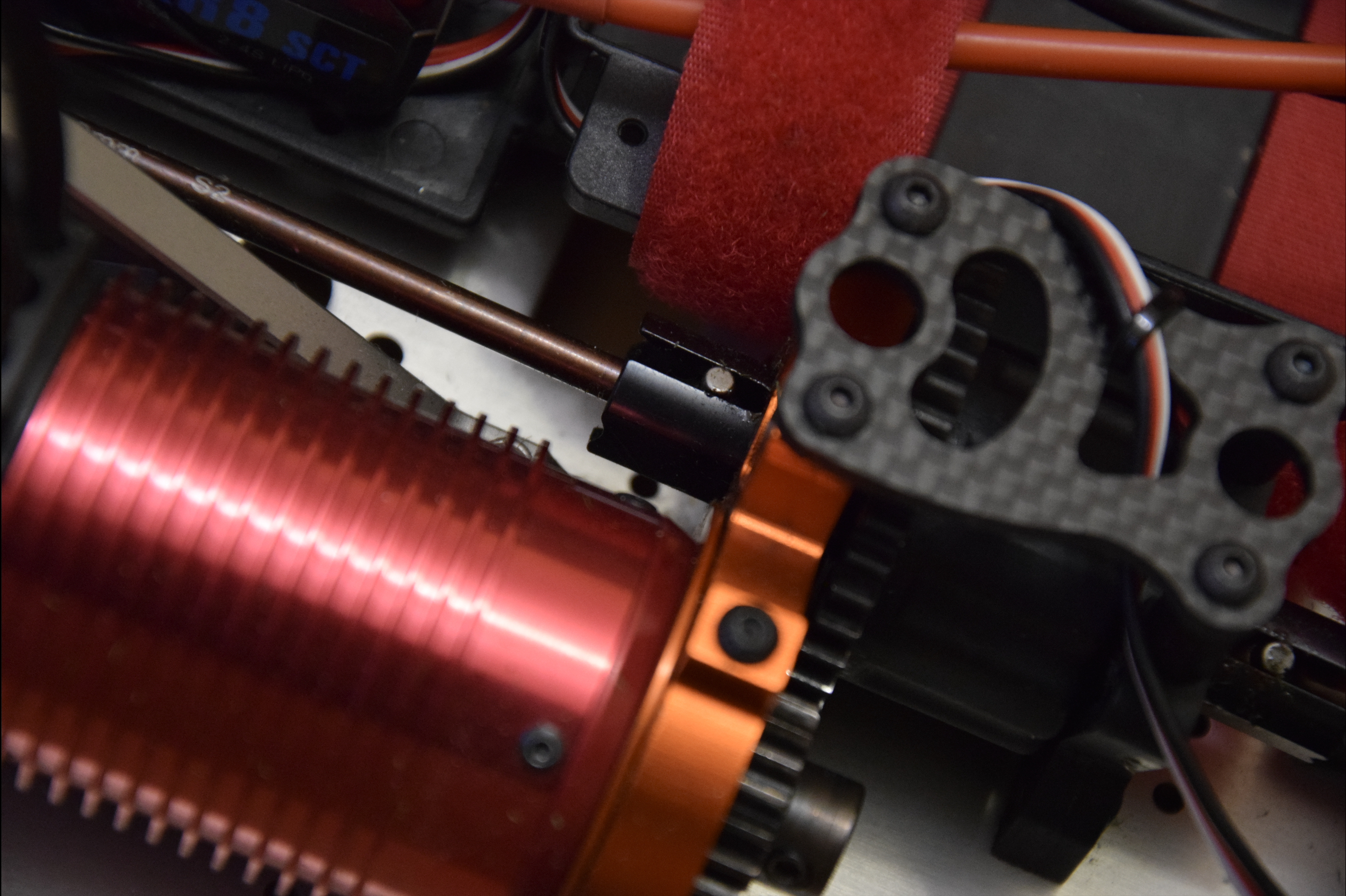
It happens and belts:
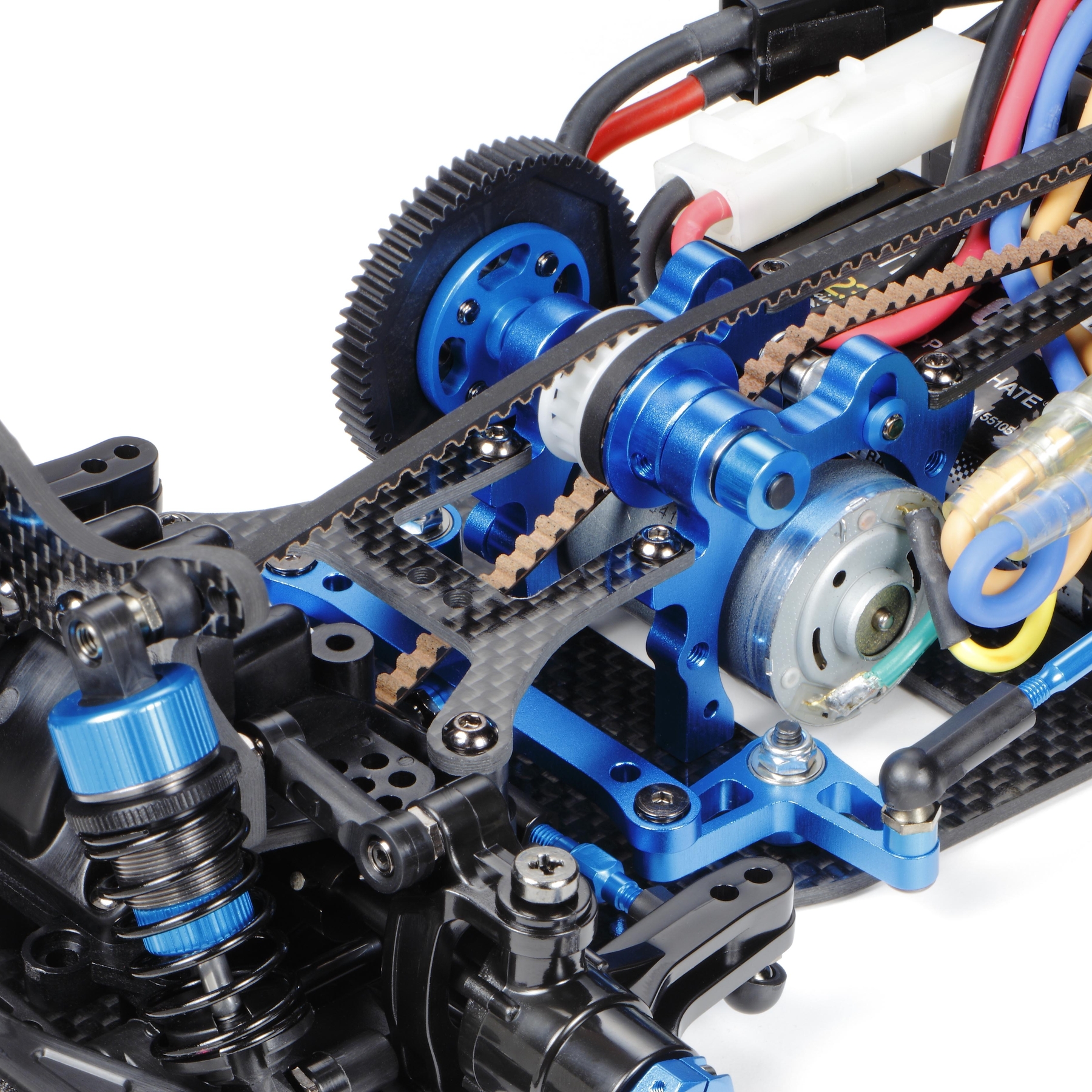
Differentials are filled with a special fluid. This fluid is of various viscosities. Moreover, if I have 3 differentials, then each of them can have its own viscosity, depending on your needs (honestly, I skate with the fact that it came from the factory and I have no idea what it affects, probably on handling in the corner) .
Of the interesting features of the structure - there are horizontal shock absorbers:
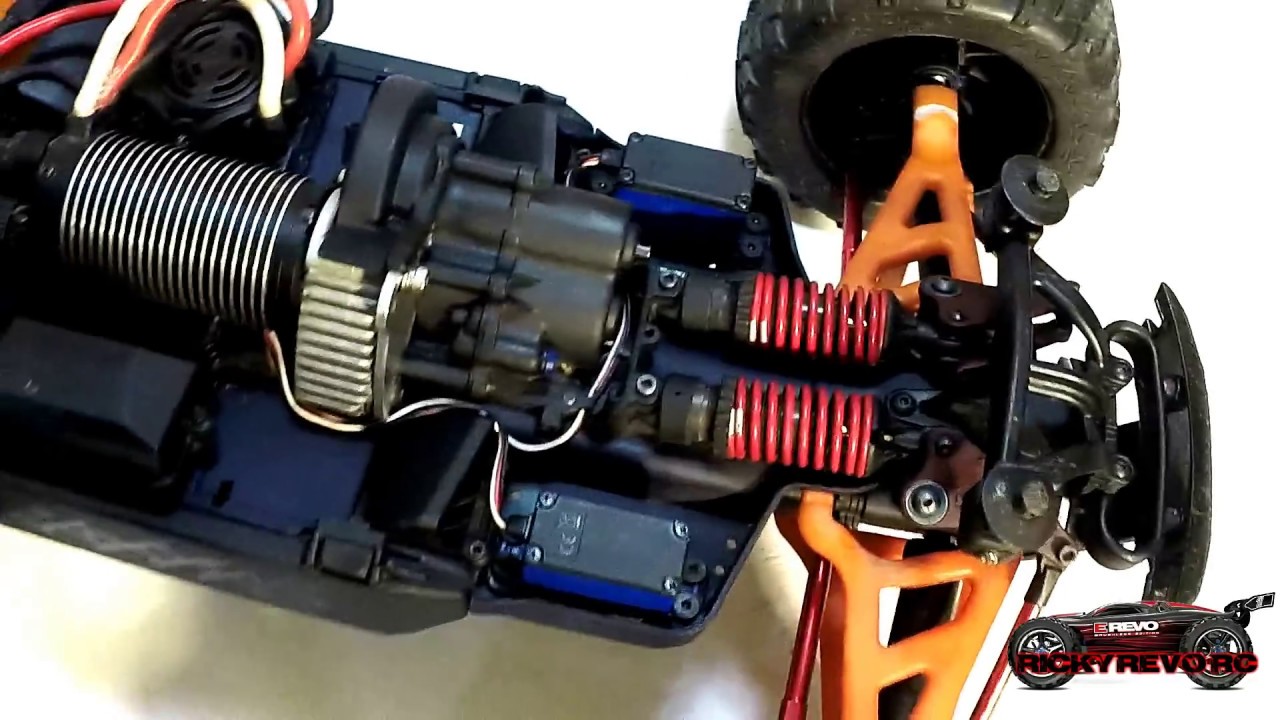
In general, as you understand the field for tuning and chassis settings is unlimited and depends on the track on which you are going to conquer the peaks.

How to choose an electric motor and ESC?
If you simplify the selection task, then it comes down to the choice of your scale. Just look in the description for what scales and classes this electric motor / regulator. Of course, this is not advice for professional riders or those who potentially want to become one. Therefore, I’ll tell you a little from what I learned by choosing an electric motor.
I would like to make you understand right away that you need to listen less to “experts”. The topic is not the simplest, extensive and purely individual. Characteristics of the model literally depend on everything. Starting from the class and the track along which you will drive, ending with wheels, suspension, transmission, weight and so on. And the most important thing is up to you, since it is you who will manage and enjoy it, and not xdickname2010. If you are a programming person, then you have a good idea of what a holivar is about which motor is better.
As a typical noob, I went to read articles and forums. It’s okay with the articles, but forums are a mistake. You will probably hear the answer to your question, after a ton of convictions and stories on what the world holds, but all this is not worth it. This hobby is not the first year. Based on just the scale of your model, you will assemble a car and everything will be cool, so do not be afraid to make a mistake.
2S or 4S?
To begin with, it’s worthwhile to understand what 1S, 2S, 3S, 4S and so on are. These parameters will haunt you starting from the battery to the motor. The parameter will be signed as voltage - voltage. It is decrypted simply:
1s = 1 bank in a battery with 3.7v in nominal
2S, this is already a battery with two banks of 3.7v each connected in series and giving 7.4v in total. The more voltage the more speed and power. 3S - 4S are maximum points for a 1: 8 scale. We will talk about the choice of the battery, as well as features in a separate article. That's all you need to know for now.
Electric motor
Electric motors come in two main types: Collector and Brushless.
Collector motors (brushed, brush) are cheaper, but models with such engines develop less speed and such motors are less reliable.
You probably saw such motors somewhere:
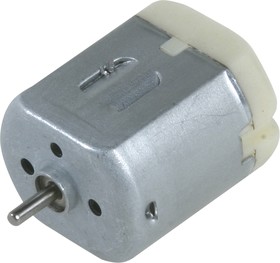
This is precisely the collector motor. If you look closely at its structure, the most important minus is obvious:
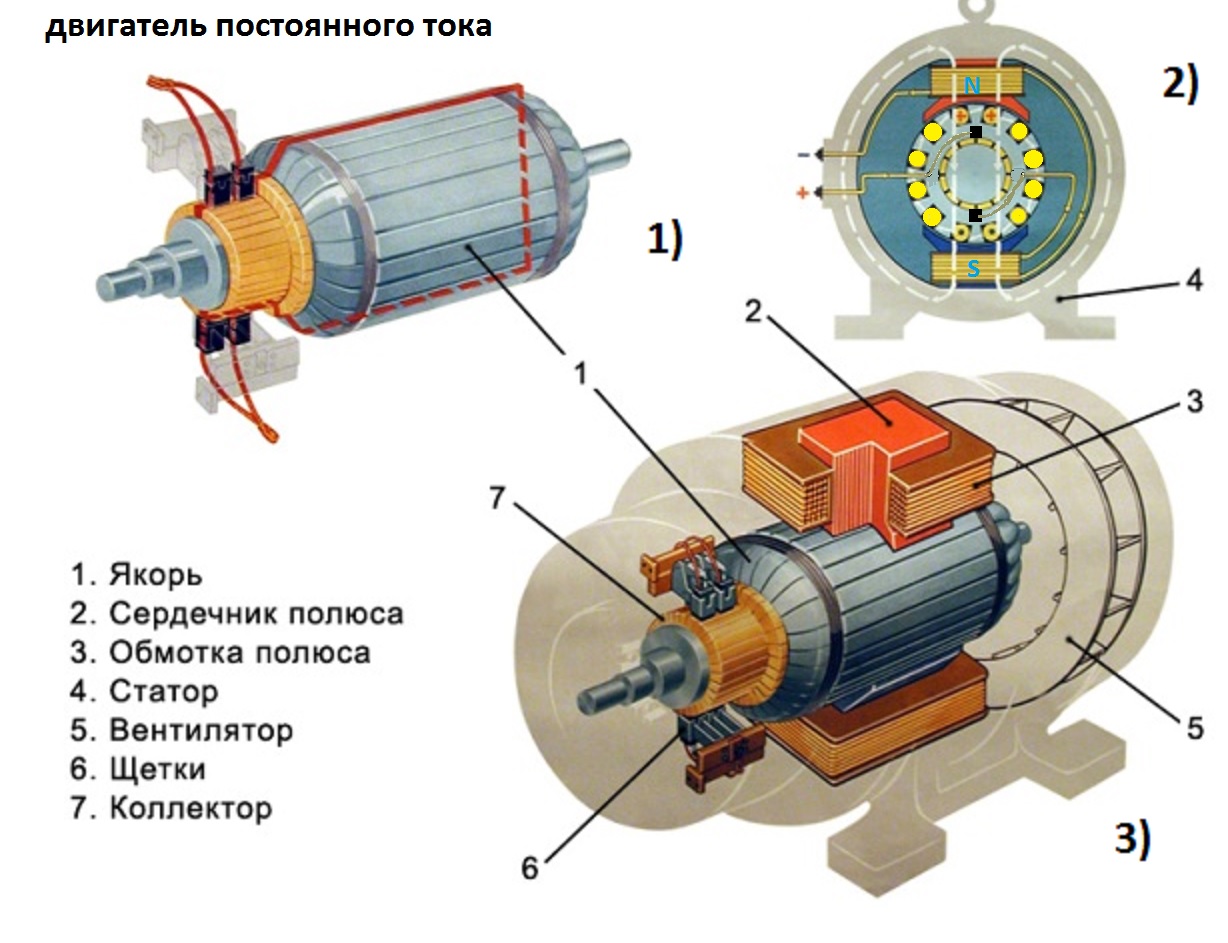
Brushes and collector are mechanically damaged by friction:
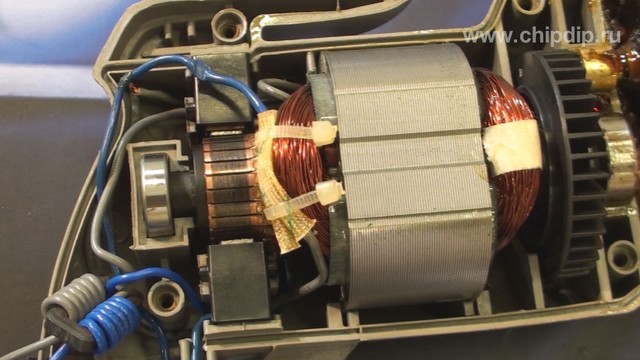
Like any type of electric motor, the rotor is accelerated by an electric field. The magnitude of this field depends on the voltage applied to the windings; the larger the magnetic field is created, the faster the rotor will spin. The motor is powered by direct current.
Brushless motors (brushless, brushless) are more expensive, but they can develop greater speed, as well as more wear-resistant. The model travels faster and longer.
This is a more complex motor in construction and requires a regulator to operate. (I understand collector, too, but to a lesser extent). By applying current to such a motor, you will not spin it. Wearproof since it does not have brushes, the rotor literally does not come into contact with anything other than the bearing at the outlet.
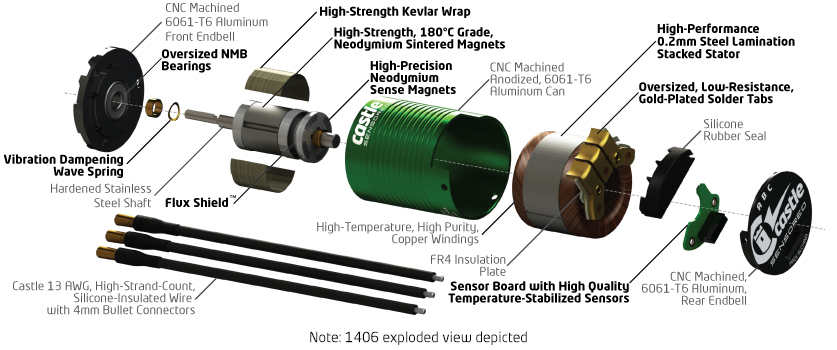
(This is a Castle Creations featured motor circuit, but generally typical of a medium brushless motor on the market)
Brushless motors themselves are divided into a couple more things. The first is the location of the rotor.
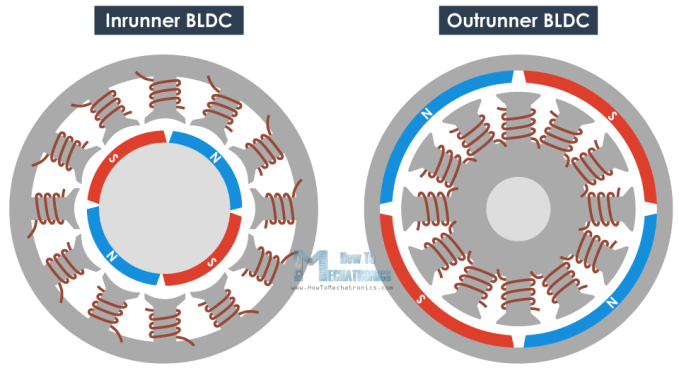
Inrunner - this type is used in typewriters. The moving part is inside.
Outrunner - the motor housing rotates itself. Such are most often used in quadrocopters.
Sensors

For us, the breakdown by: Sensored and Sensorless is more interesting and important.
That is, with a sensor and without a sensor. A very reasonable question, what about the sensors?
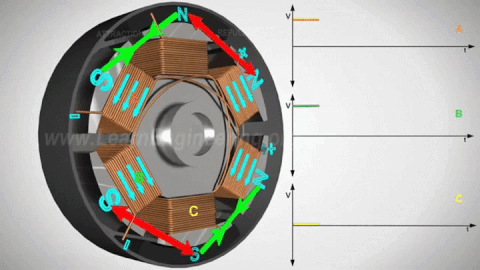
The fact is that in order to spin the rotor, the regulator needs to understand where to “shoot”. The motor has 3 phases, without going into the circuit, the bottom line is that for the rotation of the rotor, the regulator needs to use certain magnets, depending on the position of the rotor.
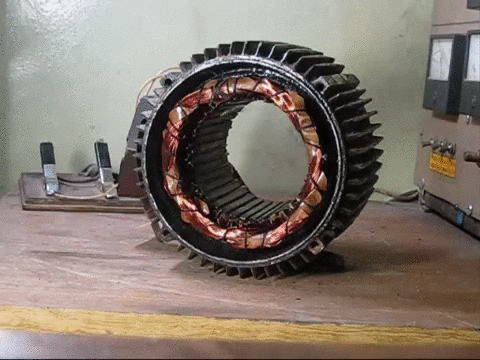
To find the position of the rotor, sensors are used.
It sounds logical, but what difference does it make to me, what is it there and how is it doing? Depends on this whether your machine can drive slowly, as well as smoothly and gently blow, brake. If you want a Crawler, and these are models that drive slowly, climbing the "mountains", then you definitely need a touch motor.
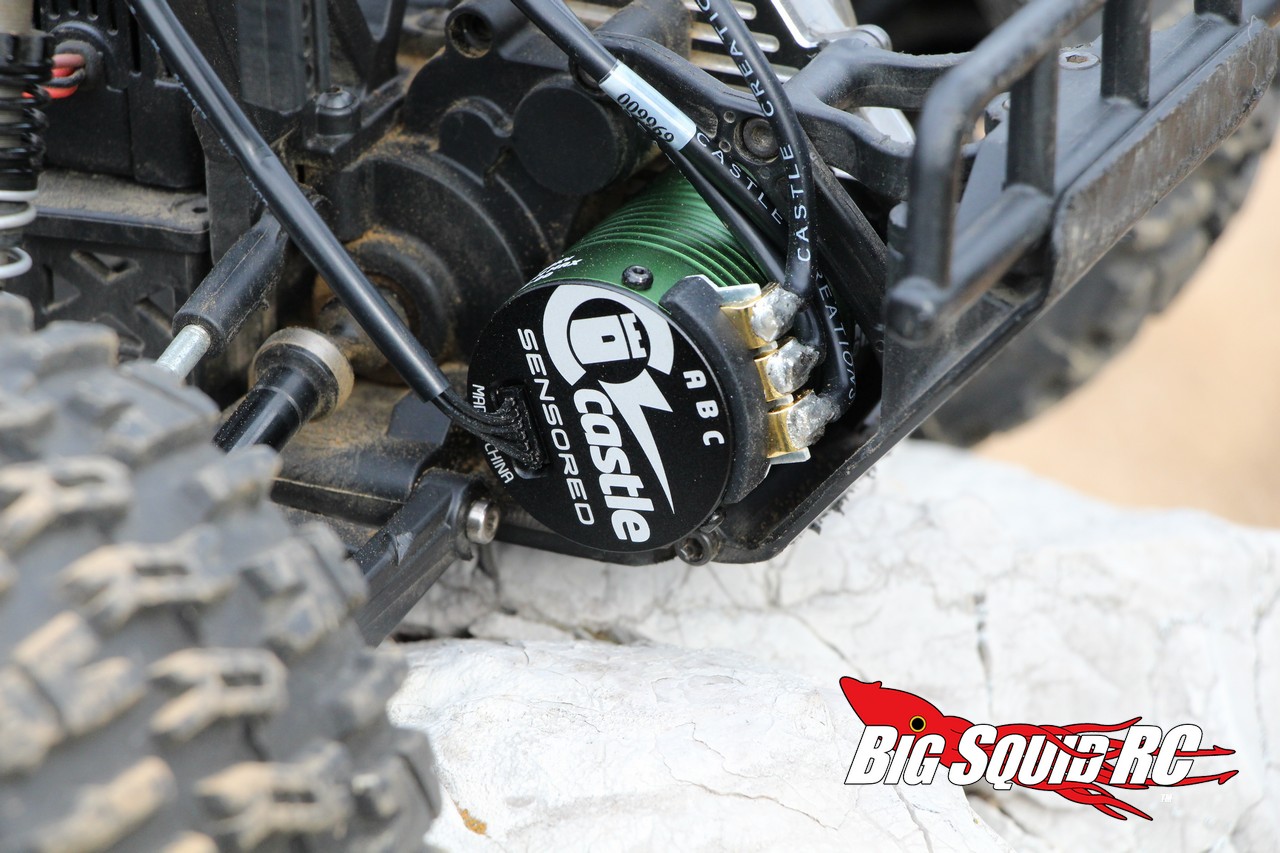
(sensor motors have an additional connector on the pope. Pay attention to the specification of the ESC controller, it may not be able to work with sensor motors. The motor will work, but the sensor will not be useful)
The brushless, sensorless motor cannot start smoothly, because the controller does not know the initial position of the rotor. And for this he will rotate it at random. If you do not give due gas, the model may not go. With less rotation, electromagnetic induction jokes take effect and the regulator understands what and where.
If you are a fan of driving, and a fan of abrupt starts with dust, then I’m satisfied with the sensorless :) But based on communication with people who participate in races, for a better sense of the model, touch is needed anyway.
KV I have is big, but I have less and happy!
This is space in terms of the size of holivars, how many Kv do you need. Typical values for cars are in the range of 1800Kv - 2600Kv.
Roughly speaking, Kv is the number of revolutions per volt. That is, taking a motor from 2300Kv, applying one volt to it without load, it will spin the rotor up to 2300 rpm.
How many revolutions do I need? It is difficult to google the answer to such a question. But it is worth starting from the following:
The lower the Kv, the greater the torque, the more traction the motor has, the slower it is. The more Kv, the less traction, the faster it is.
My TrackStar 2300Kv motor has 2 poles and a delta coil. Model weighing under 6 kg, starts off briskly, drives fast, dynamic (during a non-slow ride, I can gag and it will stand on its hind legs). Therefore, it is difficult for me to make recommendations, I have experience with only one engine, and on the forum experts sacredly assured me that it would be a tortoise and a motor at all! About the fact that the engine atstoy and I said on the track - but I am satisfied. Therefore, this is all very subjective and with the choice of the ideal engine, both theoretically and practically, you can wait a bit, having mastered at least one. Otherwise, how to understand the difference?
Gear ratio

In the photo you can see two gears, pignon (which is on the motor) and spur (which is large, on the differential). In useful links, I left a couple of articles on the topic of gear ratio. It is important not to overload the motor, but also not to give it an easy life.
A change in the number of teeth of pignon and spur changes the gear ratio of the transmission, which directly affects 2 indicators:
- maximum speed of the model (it is greater if the spur-pignon ratio is less).
- acceleration of the model (it is greater if the spur-pignon ratio is greater, because higher torque).
Number of turns, number of fields, type of winding, resistance, temperature
Do not bother yourself with this nonsense, really not worth it. If you still really want to, then the links at the end of the article are at your disposal.
Crib for holivarov:
Within the framework of one model line, motors with different kV differ in the number of turns of the winding - the less turns, the more kV.
The more fields, the less Kv and more traction. The fewer fields, the more rpm and less traction. I understand this because the rotor rotates faster between two magnets along its axis than between 5.
Normal engine temperature is up to ~ 90-100 degrees. I did not have more than 60 on the track. A high temperature is bad in that it affects the circuit parameters. At high temperatures, magnets can lose their strength. If you are completely a nerd, then we can also say that at high temperatures the resistance from electromagnetic induction of the motor decreases and the current increases, which can lead to overheating, short circuit and fire of the motor. This is also true if you block the wheels, and due to the fact that there is no rotation, there is no induction, it will soon burn out.
Winding with a delta or a star - as I understand it at the moment, these are methods of transmitting electricity through 3 phases, the principle of connection, so to speak. In large non-machine electric motors, when starting the star and delta circuits, they switch automatically, as this reduces the current load that occurs when the motor starts. For example, at the start, a star, and then a delta.
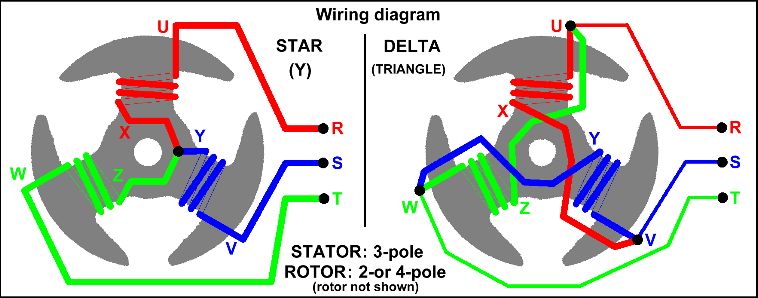
ESC regulator
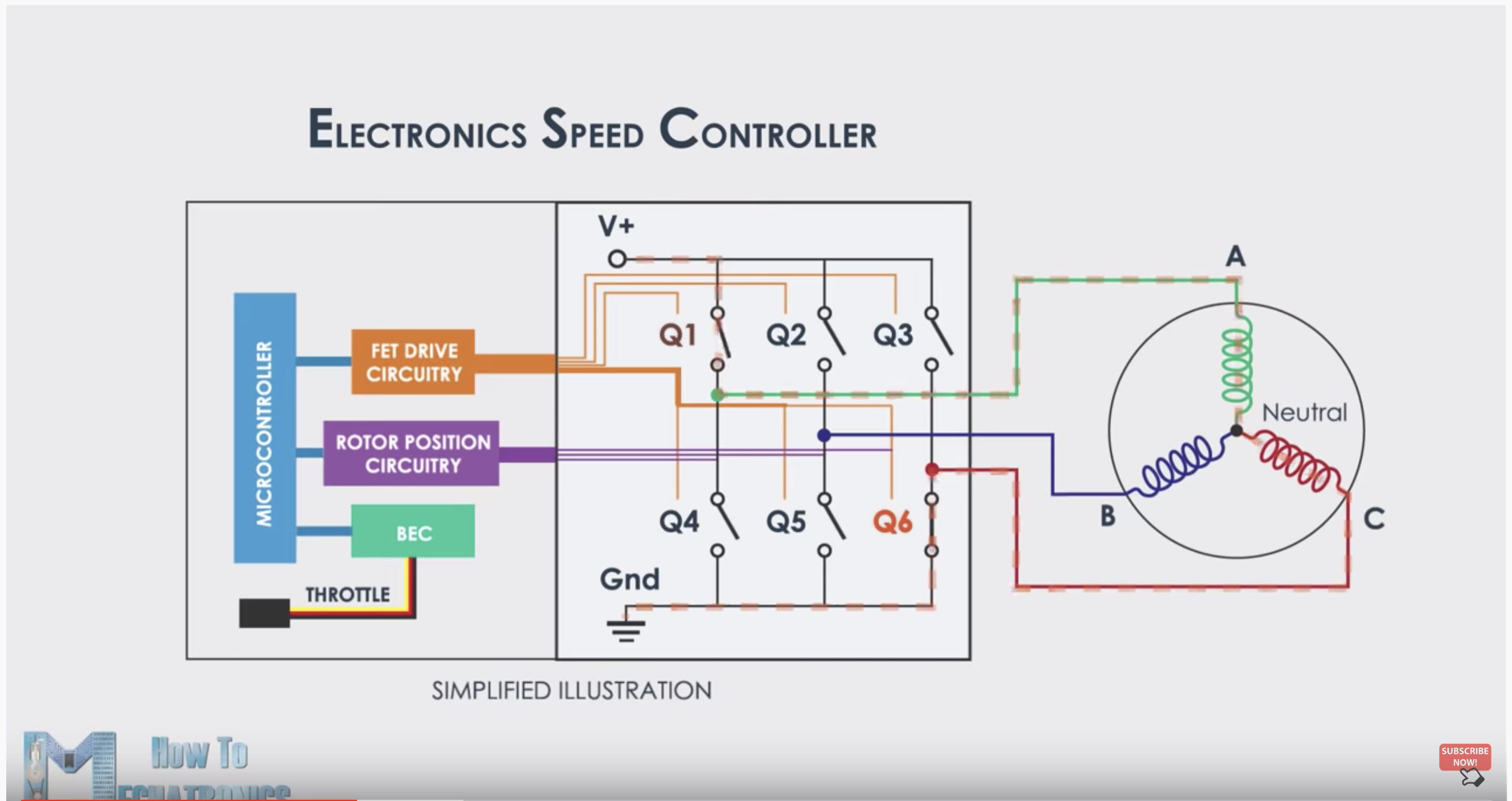
(ESC operation scheme, and star branching, video in useful links)
ESC - Electronic Speed Controller, electronic speed controller. It is connected to the radio and controls the electric motor, and also feeds the servo (motor for left / right).
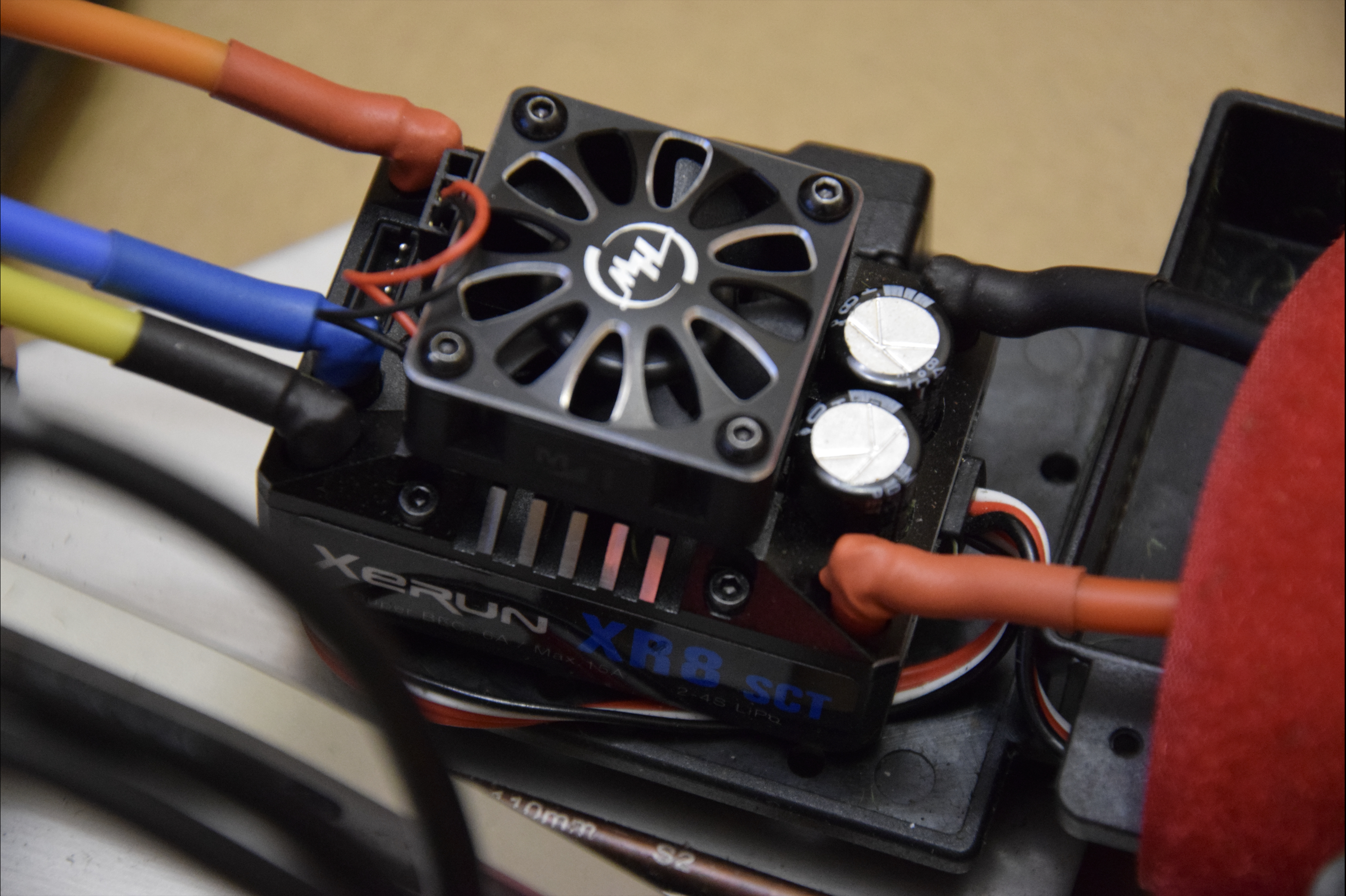
(3 wires on the left go to the motor, red with black on the right, connect to the battery)
It’s worth choosing a regulator with a small margin and with the thought in your head that it can be used not only for car models, and not only with any particular motor. It is advisable to take a regulator that can work with touch motors, even if you do not plan to buy such a motor. For growth, so to speak. From the main parts of the regulator, in addition to the main circuit, BEC and capacitors can be distinguished.
BEC is used to lower battery voltage for an acceptable servo and radio. After all, the servo drive and the radio are powered by ESC. If you are a special enthusiast, then there are people who lack the built-in and they solder their BEC.
Capacitors smooth voltage surges in the circuit, they can happen both at start-up and during braking / power cut-off of the motor due to induction of the wires themselves (and this happens, in shock, there is a link to the forum in useful links). As in the case of BEC, if you do not have enough built-in capacitors, you can solder them.
To configure the regulators are used software cards:

As a rule there, you can configure the compartment for voltage (if the voltage drops, it means that your battery is discharging and this is potentially dangerous, since the voltage drops, amperes, temperature and voila increase). Also there the maximum braking force, the initial impulse, on / off reverse gear, etc. are adjusted.
Do not buy software cards under ESC. They will probably be with local lovers or track owners
Amps and Voltage
About voltage, we already know. 3S-4S do not scare us.
Amps - in the specification for motors, this is the 3rd most important thing to pay attention to.
Cont Current: 80A - Current in nominal value, that is, at least drive for hours at this current and everything will be fine.
Max or Burst current: 120A - Maximum short-term current strength. For example, when starting or braking.
It is impossible to answer the question how much current will flow through the system without experiments. Count with a margin, but adequate. The regulator for the motor should have the same values, and preferably a little more. For example, for the motor from the example above, the parameters are suitable - Cont 90A, Burst 140A.
You can build on the power of the motor, for example:
Motor power 1600W, using a 4S battery we get - 1600W / (4 * 3.7v) = 108A.
About batteries there will be a separate article, but looking ahead, 3.7v is the nominal voltage (average). A fully charged can gives 4.2v, so the current will be even less. Do not forget that this is a calculation on the maximum numbers. In reality, the model has a stage of acceleration, braking, inertia.
If you take into account that the current of 108A flows along the circuit of my model, then the connectors from the battery to the regulator should have burned out for a long time. But everything is in order. I don’t even want to scare you and paint you what kind of connectors they can withstand. I have a motor + 1600W and a t-plug in the documentation of which 45A, maximum 60A, are declared, after an hour of pokatushek they do not even heat up. Therefore, do not worry too much as I did, I counted myself 150A under load. Such loads simply do not happen on a scale of 1: 8, if you do not have square wheels.
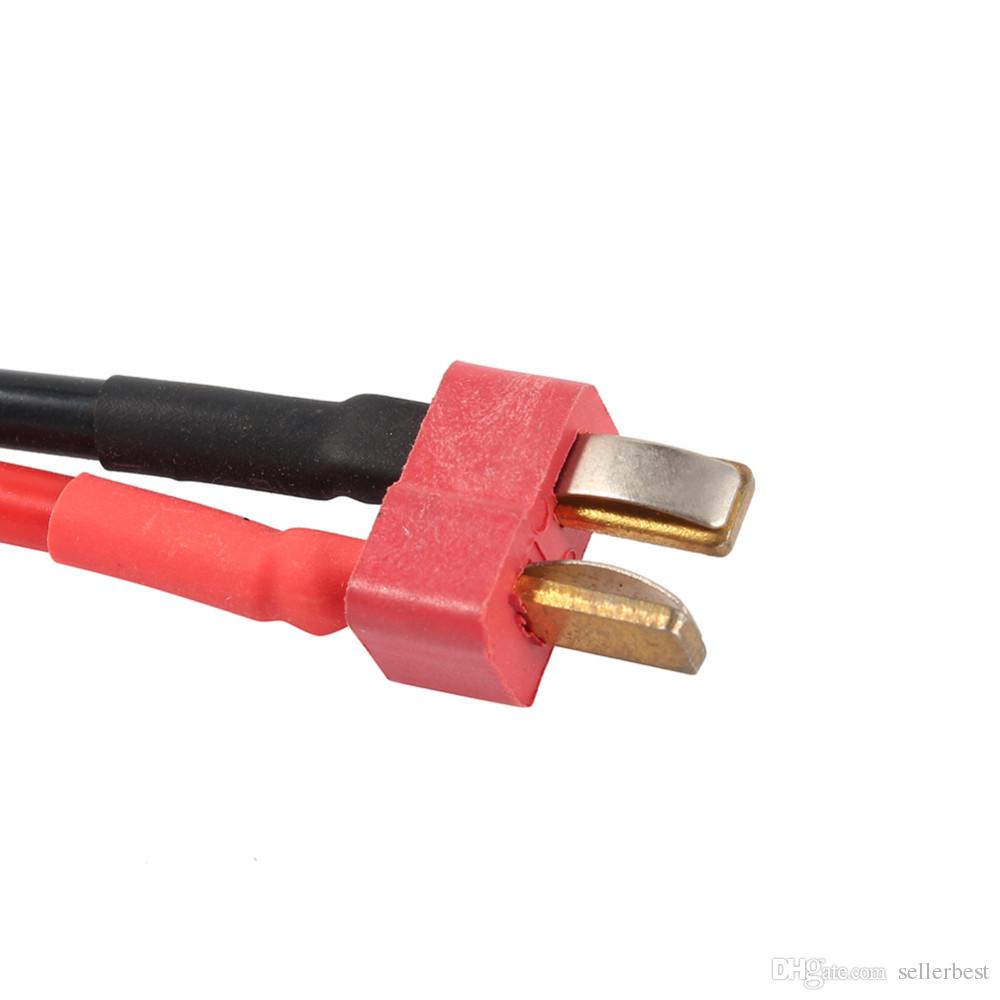
(t-plug)
Combo ESC + Electric Motor
Have you ever bought a DSLR? Surely you know that there is a carcass and a lens. In fact, these are two things that are necessary in order to take photos. How you will take photos and how you will get them depends equally on each of them (of course, if you do not take into account post-processing). A great tip for a beginner would be - take the whale version. In it, the carcass and the lens go in one box and are ideally suited to each other. (Professionals, of course, prefer to buy everything separately, but that's another story)
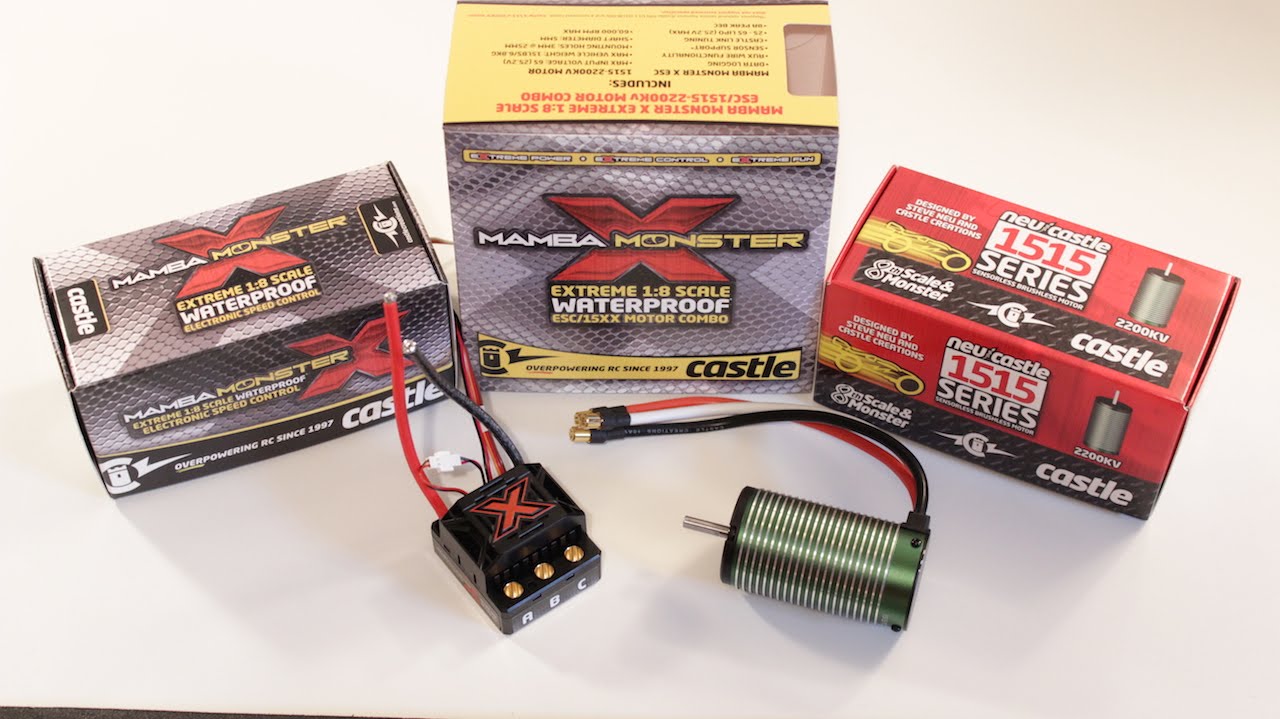
To solder or not to solder, that’s the question
Often, motors and regulators come with wires in the kit, but are not soldered. There are several reasons: the diameter of the wire depends on the currents of your machine, the length of the wire depends on the location of the parts on the chassis. If you confidently solder, then it makes no difference to you. Only remember - the weakest points in the chain are the places of soldering :)
If you do not have a soldering iron and experience in this matter, then you can contact people on the track or in service centers. On the track it will turn out conditionally free.
Moisture protection
Water batteries are not afraid, motors are not afraid. But the regulator and the servo can blunder. Therefore, if you plan to bathe your car, then pay attention to the postscript waterproof. The only drawback of such regulators is the complexity of the repair, since the chips are filled with resin
Shops where to buy
In the first article, I touched on this topic a little, but it seems that I should write once again. In Russia, Ukraine, there are not so many or almost no manufacturers of spare parts for cars. Basically, all the goods are imported. Therefore, you should think about taxes that you can potentially pay when buying on foreign sites.
Ask the store to underestimate the cost
Of the well-known stores, hobbyking can be distinguished, it has both products of its brands and others. For example Turnigy. But components from Turnigy, are not famous for the most top-end features. Although I am pleased with the engine. I bought my combo there. As well as the chassis. That in fact most of the car. There are horizonhobby, rcsuperstore, rcplanet and so on. In fact, I only google them that :) The fact is that I would recommend to study the goods on these sites, and look and buy already in the local market. Local stores googled very quickly and as a rule you will find everything, since there are not so many of them, probably due to the relatively cheap cost of components. The difference in price between overseas + taxes and local is not so big that it would be steamed with payment and waiting for delivery.
Find clubs, friends, organizations that engage in this hobby
Then you can certainly buy goods at a discount.
Companies of components that are heard: hobbywing - their engines are usually black and white, like a zebra and castle creations - the engines are usually green (with this description on the track, you as a pro will distinguish components from others. In general, as a rule, the brand is written on motors) . Both deal mainly with ESC and electric motors. What is the difference between them I can not say, experience only with a hobbywing. He suits me. Castle creations are more expensive and judging by the reviews there are more settings. You understand, to each his own and to get the maximum, you need to clearly understand why it is necessary. While you are a beginner, take + - average. Enough for you, I'm sure.
Next will be
I revised the list a bit, in fact we only need to consider servos, equipment and a radio. And a little exotic on the topic of how to control an ESC or servo using raspberry pi.
useful links
- EN How Brushless Motor and ESC Work and How To Control them using Arduino
- RU What is the difference between a collector and a brushless motor?
- EN Long wires from the battery to the ESC, can kill the ESC (Do not worry, it's about meters)
- RU About gear ratio
- RU Another
- EN Flyback diode
- RU Wire cross section, AWG
- RU What is afraid of water
tvr Thanks, corrected errors
Duke_nukeum Thanks, fixed a bug
sciomenihilscire Thanks, fixed the error
NiPh Thanks, fixed the error
All Articles